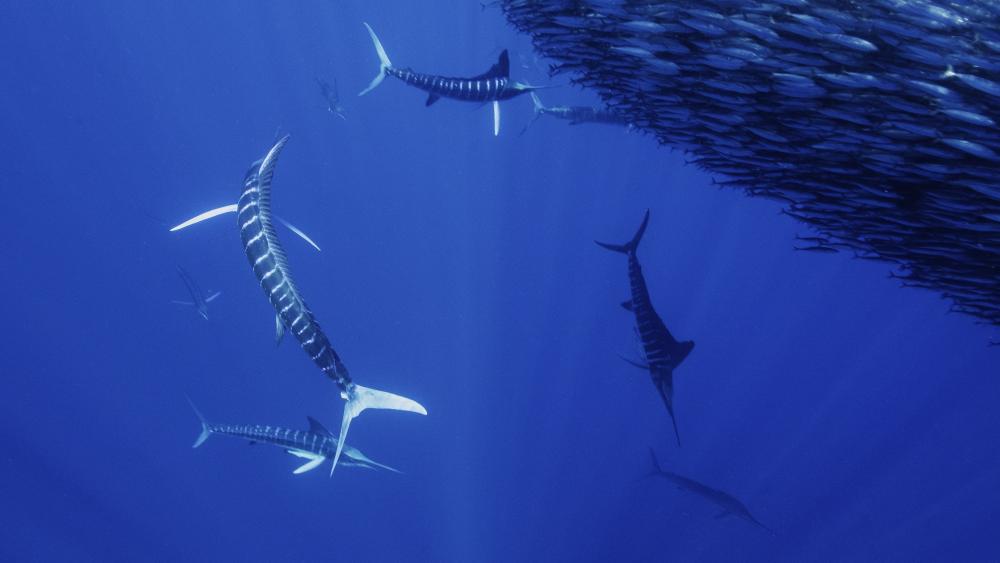
Striped marlin group-hunt shoals of small fish. | Photo: Nick Price for Costa Sunglasses
Striped marlin are some of the fastest fish in the sea.. In groups, they take turns attacking large schools of Pacific sardines with the help of their spear-like rostrum. How they coordinate this high-speed hunt without injuring one another has long fascinated biologists and nature-enthusiasts alike, and now scientists think they may have found a potential clue.
Light stripes, dark stripes
The research team from the "Science of Intelligence" Cluster of Excellence has been investigating the group behaviour of marlin and their schools of prey for some time, as these complex animal interactions can be used to study many basic principles of collective intelligence and shoaling behaviour. When analysing drone videos, they noticed something unexpected: the stripes on individual marlin got visibly brighter as a fish moved in for an attack. As they swam away, those stripes dimmed down in colour again. Were the fish changing colors to communicate with one another?
To explore this question, the researchers analysed twelve high-resolution video clips, each showing two separate attacks by two different marlin on a shoal of sardines. They also quantified the contrast of the body stripes of the two attacking marlins compared to a randomly chosen marlin that wasn’t attacking. Their analysis confirmed that predatory fish rapidly change colour before and after an attack, suggesting that this could be a reliable signal for their conspecifics to announce the beginning and end of an attack.
A signal for conspecifics
For striped marlin, color change involves the exposure of iridophores, resulting in a change from blue-grey to highly contrasting lateral stripes. While it is known that marlin can change colour, this is the first time this has been linked to hunting or any social behaviour. "Colour change in predators is rare, but especially so in group-hunting predators. In this case, the colour change seems to act like a traffic light for conspecifics. Something like this: Stop, now it's my turn to hunt," said researcher Alicia Burns from the Humboldt University of Berlin, lead author of the study.
The discovery suggests that marlins have more complicated communication channels than previously suspected. "The colour changes may even serve a second purpose, namely to confuse the prey," added IGB researcher Matthew Hansen, who led the study.
The team now wants to find out whether marlin also use their colour-changing abilities in other contexts; and whether they also change colour when hunting solo, and how these changes affect their prey. Following their discovery, the researchers have also observed similar colour changes in other predatory fish species: "We already have footage of hunting behaviour of sailfish and mahi mahi, where we have seen even more pronounced and variable colour change than in marlin," said IGB researcher and SCIoI PI ProfessorJens Krause, co-author of the study.






